The RITM machine can be used in several applications and industrial processes to modify surfaces.
Surface polishing
The most basic treatment of a surface that can be done with the E-Beam is polishing. The process is illustrated in the following diagram.
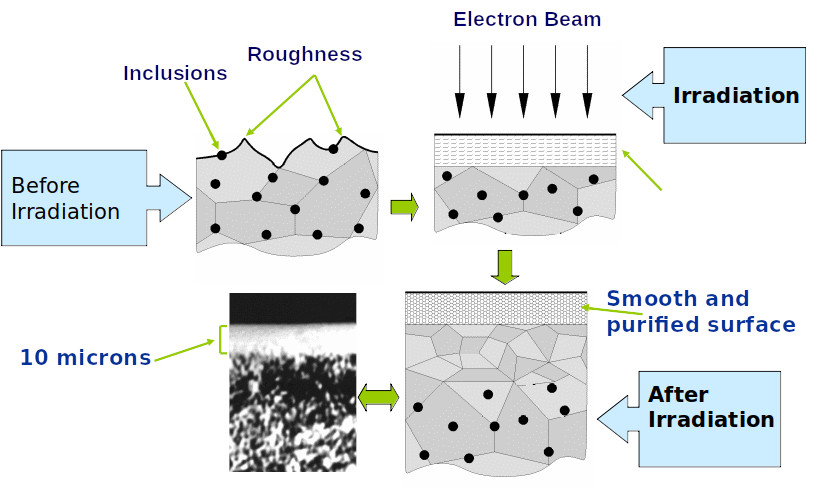
The E-Beam has a double effect. The simplest one is to smooth the roughness of a surface. Moreover, impurities are evaporated from the surface, thus leaving behind a higher purity.
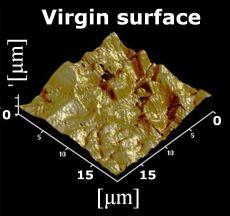 |
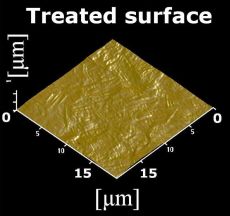 |
This pictures shows the surface of a Titanium sample before and after the treatment. It is clear that the roughness is greatly reduced.
One advantage of the E-Beam polishing is that it works well and fast on materials that are difficult to polish mechanically.
Surface Nanostructuring
An irradiation of materials by an intense pulsed electron beam on the RITM machine modifies its structural-phase state in the near-surface region. The thin melt of the material formed on the surface of the target starts cooling at a high rate upon termination of the pulse. As a result, the melt over-cools, thus considerably increasing the probability of solid phase nucleation, and hence increasing the concentration of the nucleation centers, in other words, causing refinement of the grains. Upon irradiation, the grain size on the surface can be hundreds or even tens of nanometers. Thus, the irradiation leads to formation of near-surface nanostructures whose physical properties are substantially different from those of the coarse-grained structures.
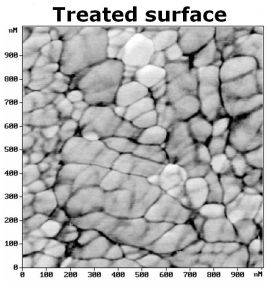
The figure shows a nanostructured surface of a titanium alloy after irradiation.
Surface homogenization
An irradiation of materials by an intense pulsed electron beam leads to a fast heating of the surface up to the melt point and further to melting of a thin surface layer. Inclusions present in the heating area are partly evaporated and partly dissolved in the molten base material. The multi-shot treatment of the material subsequently results in complete homogenization of the surface layer due to removal of the secondary phase inclusions.
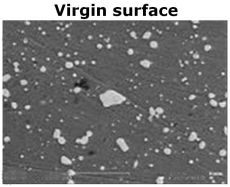 |
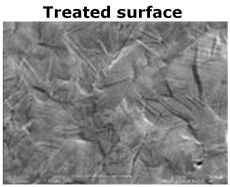 |